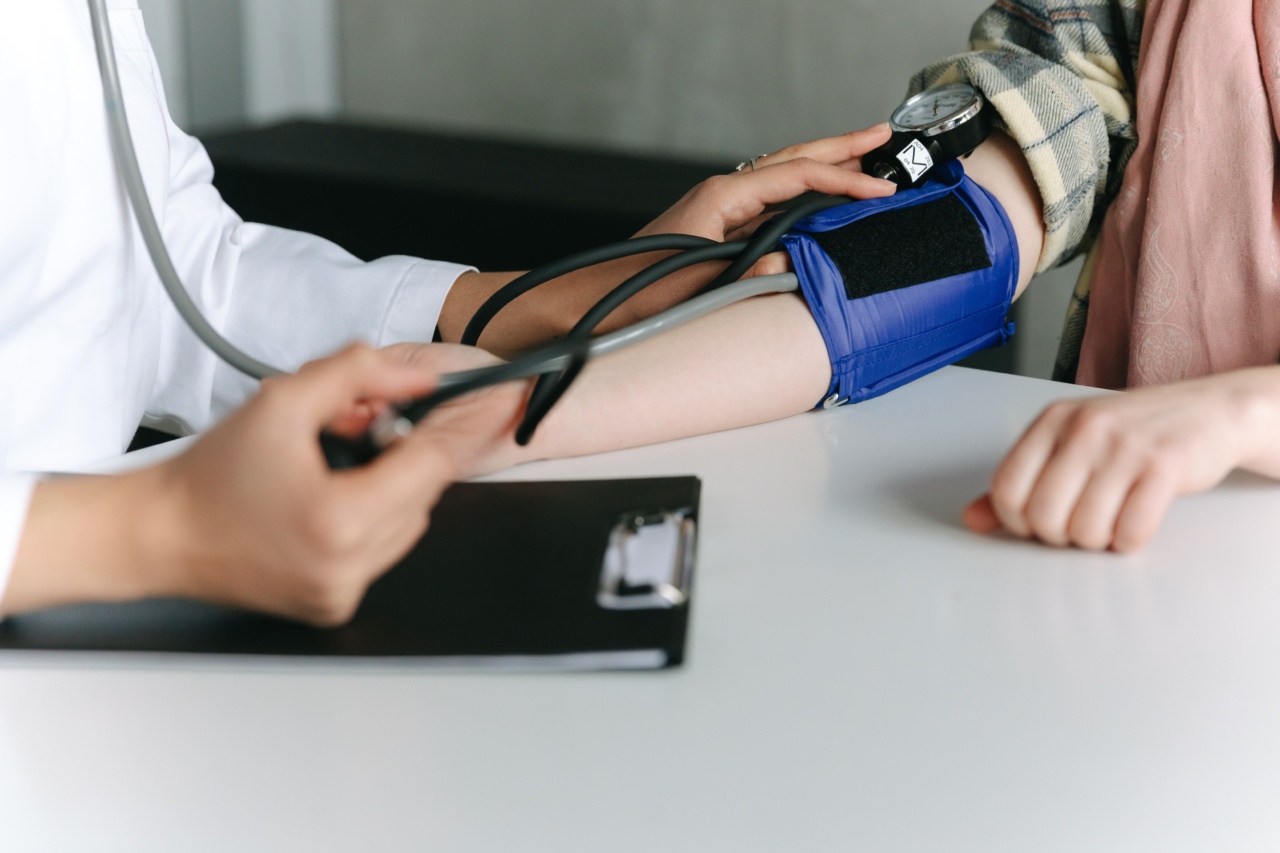Blood pressure is a vital sign that provides crucial information about a person’s overall health and well-being. It is a measure of the force of blood against the walls of the arteries as the heart pumps it around the body.
Measuring blood pressure on both arms is essential for accurate and comprehensive assessment of an individual’s cardiovascular health. In this article, we will explore the importance and benefits of measuring blood pressure on both arms.
What is Blood Pressure?
Blood pressure is expressed as two values, systolic pressure and diastolic pressure.
The systolic pressure represents the force exerted on artery walls when the heart contracts, while the diastolic pressure represents the force when the heart is at rest between beats. Blood pressure is typically measured in millimeters of mercury (mmHg) and recorded as systolic over diastolic pressure (e.g., 120/80 mmHg).
The Significance of Measuring Blood Pressure on Both Arms
Traditionally, blood pressure has been measured only on the left arm. However, recent studies have shown that there can be significant differences in blood pressure readings between the left and right arms.
Taking measurements on both arms provides an accurate and comprehensive assessment of the individual’s cardiovascular health. Here are some reasons why measuring blood pressure on both arms is important:.
1. Detecting Discrepancies
Measuring blood pressure on both arms allows healthcare professionals to identify any asymmetry or discrepancies between the arms.
Significant differences in blood pressure readings can indicate underlying health conditions such as arterial blockages, peripheral artery disease, or aortic dissection. Detecting these differences can guide healthcare providers in their diagnostic and treatment decisions.
2. Assessing Peripheral Artery Disease (PAD)
Peripheral artery disease (PAD) is a condition characterized by narrowed or blocked arteries that restrict blood flow to the limbs, particularly the legs.
Measuring blood pressure on both arms can help identify PAD by comparing the blood pressure in the arms to the blood pressure in the ankles. A significant decrease in ankle blood pressure compared to arm blood pressure may indicate the presence of PAD.
3. Evaluating Cardiovascular Risk
Measuring blood pressure on both arms provides a more accurate evaluation of an individual’s cardiovascular risk.
Research suggests that a higher blood pressure in one arm compared to the other is associated with an increased risk of cardiovascular events such as heart attacks and strokes. By detecting these disparities, healthcare providers can tailor preventive measures and interventions accordingly.
4. Monitoring Hypertension Treatment
For individuals diagnosed with hypertension (high blood pressure), measuring blood pressure on both arms can help monitor the effectiveness of treatment. Hypertension management often involves a combination of lifestyle modifications and medications.
By comparing blood pressure readings in both arms, healthcare providers can assess the degree of control achieved and make necessary adjustments to the treatment plan.
5. Identifying White Coat Hypertension
Some individuals experience elevated blood pressure readings only in clinical settings, a phenomenon known as white coat hypertension. The white coat effect can lead to misdiagnosis and unnecessary treatment.
Measuring blood pressure on both arms can help differentiate between true hypertension and white coat hypertension. If the blood pressure is consistently higher in one arm, it may indicate true hypertension rather than a mere response to the clinical environment.
6. Establishing Baseline Measurements
Measuring blood pressure on both arms provides healthcare professionals with additional data for establishing baseline measurements.
Baseline measurements are essential for monitoring changes in blood pressure over time and assessing the effectiveness of interventions. By regularly measuring blood pressure on both arms, doctors can detect any fluctuations or trends that require attention or intervention.
7. Detecting Unilateral Stenosis
Unilateral stenosis refers to the narrowing of an artery on one side of the body.
Measuring blood pressure on both arms can help identify unilateral stenosis, as the affected arm may show a significant difference in blood pressure compared to the unaffected arm. Identifying unilateral stenosis is crucial for appropriate diagnosis and intervention to prevent further complications.
8. Individualized Treatment Planning
Measuring blood pressure on both arms allows healthcare providers to develop individualized treatment plans based on accurate and comprehensive assessments.
By considering blood pressure readings from both arms, doctors can personalize interventions according to each patient’s unique cardiovascular health needs. This approach can lead to more effective treatment outcomes and improved patient satisfaction.
9. Early Detection of Aortic Dissection
Aortic dissection is a potentially life-threatening condition characterized by a tear in the innermost layer of the aorta.
Measuring blood pressure on both arms can help detect aortic dissection by identifying significant differences in blood pressure between the arms. This timely detection is critical for initiating appropriate emergency management and potentially saving lives.
10. Enhancing Patient Education and Awareness
Measuring blood pressure on both arms provides an opportunity for healthcare professionals to educate patients about their cardiovascular health.
By explaining the reasons for measuring blood pressure on both arms, healthcare providers can enhance patient awareness and encourage active participation in their own care. This knowledge empowers individuals to make informed decisions about lifestyle modifications and adhere to treatment plans.
Conclusion
Measuring blood pressure on both arms is critical for accurate and comprehensive assessment of an individual’s cardiovascular health.
It allows for the detection of discrepancies, identification of conditions such as peripheral artery disease and aortic dissection, evaluation of cardiovascular risk, monitoring of hypertension treatment, and differentiation between true hypertension and white coat hypertension. Additionally, measuring blood pressure on both arms helps establish baseline measurements, detect unilateral stenosis, enable individualized treatment planning, and enhance patient education and awareness.
By adopting this practice, healthcare providers can optimize patient care and help prevent potential complications associated with cardiovascular diseases.





























